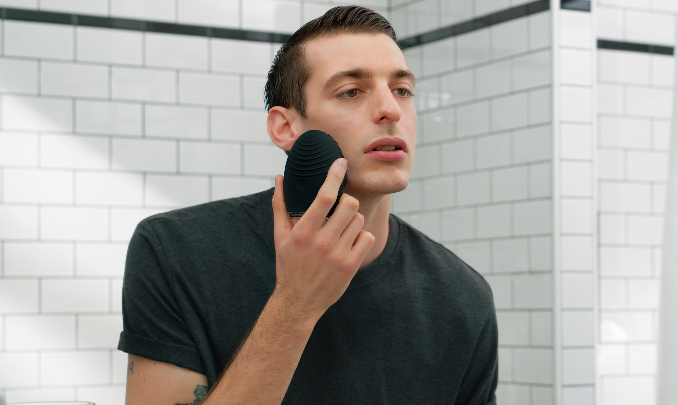Melasma and rosacea are two common types of hyperpigmentation that affect millions of people worldwide. Rosacea is another common form of hyperpigmentation.
Although these conditions can be irritating and challenging to manage, a wide variety of effective treatments can help clear up skin and restore confidence, even though they can be aggravating and tough to handle.
In this article, we will talk about the risk factors that cause melasma and rosacea, the available treatments for these conditions, and some helpful management measures.
Understanding Rosacea
What is Rosacea?
Rosacea is a chronic skin condition that causes redness, inflammation, and visible blood vessels on the face. It typically occurs in adults over 30 and is more common in women than men. Rosacea can also cause acne-like breakouts and a thickening of the skin on the nose, known as rhinophyma.
Causes of Rosacea
It is not understood what causes rosacea, but the following are some of the things that can bring on symptoms or make them worse:
Sun exposure
Hot or cold weather
Stress
Alcohol consumption
Spicy foods
Exercise
Menopause
Symptoms of Rosacea
Rosacea can manifest itself in a variety of ways, depending on the individual, although some of them are common:
Persistent redness on the cheeks, nose, chin, or forehead
Small, red, pus-filled bumps or pimples
Visible blood vessels on the face
Eye irritation or dryness
Thickened skin on the nose or cheeks
Treatment for Rosacea
Rosacea is typically managed with a combination of pharmaceuticals, alterations to the patient’s lifestyle, and seeking appropriate rosacea treatment in Sydney. These modifications, which may include the following, may include:
Topical medications: Creams or gels containing antibiotics, azelaic acid, or retinoids may be prescribed to reduce inflammation and clear up acne-like breakouts.
Oral medications: Antibiotics or low-dose isotretinoin may be prescribed for more severe cases of rosacea.
Laser therapy: Laser treatment can help reduce redness and visible blood vessels on the face.
Lifestyle changes: Avoiding triggers such as sun exposure, alcohol, and spicy foods can help reduce symptoms.
Understanding Melasma
What is Melasma?
Melasma is a common skin ailment that causes patches of brown or gray skin to develop on the face, most frequently on the cheeks, forehead, nose, or upper lip. Melasma can also affect other parts of the body. It is significantly more common in women than men, and it frequently occurs either during pregnancy or while the patient is using hormonal birth control.
Causes of Melasma
It is not known what exactly causes melasma, but the following are some things that may bring on symptoms or make them worse:
Sun exposure
Hormonal changes during pregnancy or while taking birth control pills
Genetics
Skin irritation
Symptoms of Melasma
Melasma may present itself with the following symptoms:
Brown or gray patches on the face, typically on the cheeks, forehead, nose, or upper lip
Patches may be symmetrical on both sides of the face
Patches may darken in response to sun exposure
Treatment for Melasma
Melasma is often treated with a mix of topical drugs and adjustments to the patient’s lifestyle, which may include the following:
Topical Medications: Creams or gels containing hydroquinone, retinoids, or corticosteroids may be prescribed to lighten dark patches.
Chemical Peels: A chemical peel can help exfoliate the skin and lighten dark patches.
Laser Therapy: Laser treatment can help reduce the appearance of dark patches on the face.
Lifestyle Changes: Wearing sunscreen and avoiding sun exposure can help prevent melasma from worsening.
Tips for Managing Rosacea and Melasma To Achieve Clear Skin
In addition to medical treatment, there are several steps you can take to manage rosacea and melasma, including:
Avoiding Triggers: Identify and avoid triggers that can cause symptoms to flare up, such as sun exposure, stress, spicy foods, and alcohol.
Wearing Sunscreen: Protect your skin from further damage by wearing broad-spectrum sunscreen with an SPF of at least 30.
Gentle Skincare: Use gentle, fragrance-free products to avoid irritation and further inflammation.
Moisturizing: Keep your skin hydrated and moisturized to avoid dryness and irritation.
Seeking Professional Help: Consult a dermatologist to determine the best treatment plan for your needs.
Final Thoughts
Rosacea and melasma are common skin diseases that can be effectively treated by receiving the appropriate medication and adjusting one’s lifestyle.
Even though the precise reasons for these disorders are unknown, several factors might exacerbate symptoms, including exposure to the sun, stress, and particular meals.
Melasma can be treated with topical drugs, chemical peels, laser therapy, and lifestyle modifications, while rosacea can be treated with oral and topical medications, laser therapy, and lifestyle changes. Other melasma treatment options in Sydney include using sunscreen. In addition to receiving medical treatment, controlling these disorders requires avoiding
triggers, using skincare products that are mild on the skin, and seeking the assistance of a dermatologist for professional guidance.
Clear skin is attainable, and patients with rosacea and melasma can improve their quality of life and regain their confidence if they take the appropriate steps to treat their conditions.

